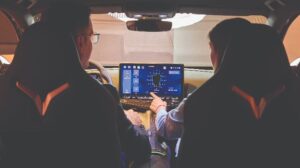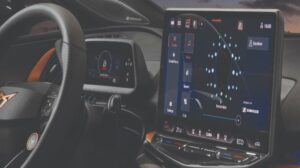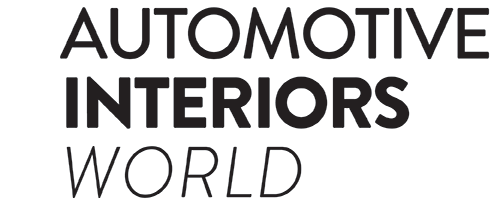Listening to music and podcasts while driving is something many people look forward to. That means there’s immense pressure on those responsible for crafting in-cabin audio
Perfect pitch, precise tone, and bass that fills the cabin whether traveling through the city or speeding down the autobahn – delivering flawless sound is a monumental task for engineers. It becomes even more complex with the introduction of different types of powertrain, and the wide range of audio sources entering the vehicle. After all, low-bit-rate digital music falls far short of CD quality. Creating the perfect vehicle acoustics experience is becoming increasingly important. As people bring more audio content – such as music and podcasts – on their journeys, delivering high-quality sound has become a crucial focus for engineering programs.
Cupra is dedicating considerable time and effort to crafting the perfect aural experience for its vehicle occupants. This involves developing and testing systems both in-house and through collaborations with leading consumer electronics brands, including Sennheiser’s Mobility division. For example, the two companies partnered to create the high-fidelity sound system in the all-electric Cupra Tavascan SUV.
José Luis Álvarez, who is responsible for sound system projects at Cupra, explains the brand’s approach: “Sound quality is the result of a combination of many key factors, which we typically group into four main pillars: loudspeakers, mechanical integration, electronics platform and the necessary team expertise to make the right choices about it all, including the all-important system tuning.”
At Cupra, audio system development begins in the early concept stages of the vehicle to ensure the best loudspeaker positioning and integration. This process involves close collaboration with the design department, drawing on over 20 years of expertise.
“High-quality speakers are chosen and, with the aid of CAD tools, strategically adapted and positioned in the car cabin to ensure well-balanced sound distribution. Also at the early phases, virtual structural acoustics testing can be started using simulation models,” notes Álvarez.
Álvarez and his team also select and customize the electronics platform based on the systems being designed, focusing on the number of audio channels and the required electric and digital signal processing power.
This enables the use of real-time algorithms to create sound system equalization and advanced audio features for end users, such as 3D surround sound.
Although it’s an engineering function, it’s vital that team members have a genuine passion for music and sound.
“Actual testing starts at component level and later with system mock-ups, enabling us to test the loudspeaker system, amplifier electronics and software, including HMI, at early design phases,” says Álvarez. “In the case
of the loudspeakers, we start with a design validation test of the first prototypes to confirm that samples are robust enough to be industrialized later on in series production.”
Shortly after lab mock-up testing begins, vehicle prototypes become available. Cupra typically builds three rounds of prototypes, each featuring components and interior designs at varying stages of maturity. “These rounds are very useful for complete system tuning and validation, ensuring the required quality of both hardware and software before release for production,” comments Álvarez.

Tune-up time
Cupra deploys equalization tools similar to those used by sound engineers when tuning systems in concert venues, clubs and recording studios. The engineering concepts are very similar, as the ultimate goal is to design and tune a sound system specifically for a particular space – in this case, the vehicle cabin.
Adrián Mateo, car audio acoustics engineer at Cupra, explains, “A set of impulse response measurements obtained at several points in the vehicle cabin allow us to build an acoustic model of the complete system. Then the acoustic response can be predicted and shaped to a desired target simulating a set of digital filters, gains and delays for each audio channel.”
For static testing, Cupra uses an anechoic chamber to block out external noise and create a controlled environment for precise measurements inside the car. It also uses a room similar to a recording studio, which serves both for tuning the complete vehicle sound system and as a reference for sound quality.

Dynamic testing is also a fundamental component of a program, due to the impact that road, engine and wind noise may have on the sound being reproduced. “Thus the final tuning of audio parameters is always done on road, at different speeds and on different pavement types,” reports Mateo. “We can set up our tuning tools on board to make final adjustments to compensate for unwanted interference, ensuring consistent performance under different driving conditions.”
It’s reassuring to know that fine-tuning is still done by ear in the vehicle (though specific tools are adopted to operate the amplifier’s digital signal processor). But what are engineers listening for during the wide range of analyses they conduct?
“Because we seek natural, transparent, distortion-free reproduction, we mostly use a variety of music produced with acoustic instruments, such as classical or jazz,” says Mateo. “We also use a selection of songs from many other genres, such as pop, rock and electronica, and even podcasts, to make sure that we set up the system to play through the whole frequency spectrum at different dynamics. Plus, we test the audio systems with a variety of sound sources and audio formats, to ensure that all of them will work properly.”
Ensuring that the audio technology lasts the lifetime of the vehicle is crucial. Like every other component in the car, the sound system must undergo rigorous evaluation both in the lab and on the road to validate this.
“It must be fully tested and pushed to its limits in various ways before being approved for production, both at the component level and the whole system level, to ensure no failures during the car’s lifetime,” says Álvarez. “Tests range from electromagnetic compliance to multiple fatigue cycles, as well as test drives covering hundreds of thousands of kilometers on different road types and under extreme weather conditions.”
Once completed, the final audio dataset is released for production. This result comes from extensive work in-lab and on-road, perfecting the sound quality for any type of listening – whether it’s jazz, rock, pop, house music or a podcast.
Quiet revolution
Electrification has refocused engineers’ efforts, shifting the acoustics dynamic According to Christopher Herold, director of engineering for acoustic systems at Harman, working on technologies for EVs has granted sound specialists more freedom to craft the in-cabin auditory experience. With the reduced noise levels in electric cars, there are more opportunities to create dynamic soundscapes. “This freedom to innovate goes beyond entertainment, as we create lighter, lower-power audio systems optimized for electric vehicles, which maintain performance standards, ensuring owners enjoy a premium in-cabin experience.
By connecting these technologies to the cloud, we enhance their capabilities, making them updateable and upgradable throughout the vehicle’s lifetime, offering more freedom and flexibility. “In EVs, there are fewer low-frequency noise disturbances, which software attempts to compensate for. Consequently, the end product is closer to our initial development,” he continues. “By tuning the sound system while the vehicle is stationary, we achieve a more natural playback up to around 80km/h before the tire and wind noise starts to become noticeable. This results in a higher dynamic range between quiet and loud instruments, enhancing emotional impact and providing more transparency and naturalness for an improved listening experience during city driving.” Electric vehicles are unique because the bass speakers must be integrated into the door panels to make room for the high-voltage batteries under the front seats or in the trunk. However, modern door panels aren’t the stiffest parts of the car, so a bass speaker can cause unwanted vibrations and noise. “To address this, Harman places the speakers into the seat, which helps reduce vibrations, ensuring consistent, stable sound quality while overcoming the audio integration challenges in EVs,” explains Herold.

Audio journey
Sennheiser Mobility collaborates closely with auto manufacturers including Cupra, Smart and Morgan to enhance the in-cabin audio experience. This cooperative approach to testing is key to a project’s success, as is the human touch. “The collaboration with the OEM is a crucial part of our work,” explains the company’s managing director, Dr Veronique Larcher (above). “It should start early on as the sound system needs to embody Sennheiser’s soul and values as well as the vehicle brand spirit.
“The process starts with consulting on hardware and speaker placement. This is followed by tuning, which involves a measurement phase to create a baseline for implementing our algorithms. The critical listening phase or artistic tuning comes next, when we implement the Sennheiser sound signature. As spatial audio is perceptual, the listening phase is essential as microphones cannot replace trained human ears that are, in the end, responsible for the Sennheiser sound.
“Our rigorous, critical listening tests confirm that a list of reference tracks behave as they should. These tracks are carefully selected for various musical attributes, and our engineers have deep experience with how these tracks perform in both studio and car environments.”
Larcher notes that these assessments include not only ‘normal’ listening scenarios but also edge cases and extremes, such as very low or high listening levels, or odd combinations of user parameters.
“We conduct maximum loudness tests to observe how the speakers react, and have speaker protection measures in place to prevent component damage at high listening levels. Performance is evaluated based on certain audio traits we aim to hear, tested over various cycles.”
Larcher adds that the rise in connectivity has had a notable impact on the Sennheiser’s work: “We’re no longer just developing systems for music but for a variety of content brought into the cabin by the user.
This includes streaming at different bit rates, new formats such as Dolby Atmos, immersive audio and meeting customer expectations for the best music quality, regardless of the source.”
The final step is the validation phase on the target platform with the OEM.



